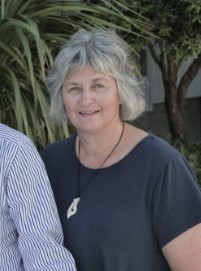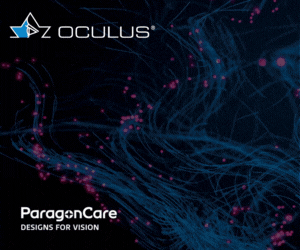Improving communication for better health outcomes
Much of the success of healthcare provision is dependent on the quality of the interactions between health professionals and patients. Health communication researcher Associate Professor Maria Stubbe from the University of Otago specialises in interactional sociolinguistics and says eyecare professionals can achieve better health outcomes by improving their communication with patients.
Patient-centred communication and shared decision-making are often cited as good communication objectives, she explains. “Talk is the primary medium to exchange information, for treatment decision-making and to establish and maintain the relationship.” In a health context, communication tends to be either unilateral (directed at the patient), bilateral (where the clinician looks for opportunities to build a shared understanding), or somewhere in between, says A/Prof Stubbe. “Clinicians are required to have a sense for which path is likely to be most successful in that moment.”
Unfortunately, even with the best intentions, shared decision-making is not a direct line to success, she says, recalling her experience accompanying her mother to the hospital for a hip replacement. There they encountered an anaesthetist who was very patient-centred in his approach, asking her mother if she preferred a spinal block or general anaesthetic, says A/Prof Stubbe. “First of all, my mother didn’t have a clue what a spinal block was and, being Dutch, her very direct response was ‘You’re the doctor, you tell me!’”
Without being too prescriptive, it’s good to be quite open-ended in your communication style, especially at a time in the consultation when you want to elicit information, she says. In this case, the anaesthetist could have explained the different options and asked her mother if she would like him to go through them in more detail. “This approach opens the conversation and you can start to gauge if you have an anxious patient or if you are dealing with someone who trusts you implicitly.”
In an eye exam, where the optometrist is trying to get through a whole series of tests, a more unilateral approach might be required, says A/Prof Stubbe. “In this context, it’s helpful to explain how the examination will work, that you will be giving a lot of instructions and if the patient doesn’t understand, they should just let you know.”
Breaking the ice
When a patient has been referred to see a specialist, acknowledging the referral letter at the start of the consultation eliminates any concerns or misunderstandings regarding what the appointment is about and provides a launch pad for the rest of the conversation, she says. Another way of avoiding consultation obstruction is ‘signposting’, a useful strategy when a patient has a long list of concerns.
Simply ask the patient what they would like to address during the consultation, and if you get the sense that it’s too much to deal with in one consultation, ask the patient to prioritise two concerns and suggest booking a second appointment to deal with the rest, explains A/Prof Stubbe. “It’s taking the professional role of managing the agenda of the consultation but giving the patient agency to decide what needs to be prioritised.”
Using positive terminology
Researchers have found that simply replacing ‘anything’ with ‘something’ dramatically reduced patients’ unmet concerns, says A/Prof Stubbe. For example, instead of asking ‘Is there anything else you want to address today?’, which is tilted towards a ‘no’ answer, try ‘Is there something else you would like to address today?’, which encourages an affirmative answer. In one study, 90% of patients exposed to the ‘something’ question raised further concerns, compared to 60% of the ‘anything’ patients. However, for this to work, clinicians must be keen to listen to their patients’ concerns, not just say the words, she stresses.
Having heard A/Prof Stubbe talk on this subject and having implemented the technique herself, Wellington Hospital optometrist Inhae Park says you can see the benefits almost immediately. “It creates a much more open conversation. I believe it has made me more attentive to my patients’ concerns and they are more open with me.”
Framing personal questions
Citing a study about health interaction communications with newly diagnosed diabetes patients, A/Prof Stubbe says indirect language can be used to solve interactional dilemmas. Topics such as age, weight and alcohol consumption are challenging to discuss; a challenge compounded by the inbuilt power imbalance of the consultation itself, she says. “Clinicians must balance the requirement for directness while being mindful of things that can cause offence, particularly when what they say can be interpreted as criticism. It’s not just what we say that is important, it’s how we say it.”

A/Prof Maria Stubbe
In the newly diagnosed diabetes patients’ study, the data showed indirect language is a common strategy to deal with such dilemmas in a health context, but it can lead to misunderstandings and detract from the mutual goal of improved health outcomes, says A/Prof Stubbe. Using weight as an example, clinicians might find that it helps to link the existing condition to a routine task, such as stepping on the scales. “It gets the topic on the table,” she says. Checking in with the patient to better understand their perspective can also be helpful: find out what’s important to them and what’s achievable. ‘Do you know how much you weigh?’ and ‘Do you want to lose weight?’ can act as conversation starters for the clinician to then weave in key messages and accentuate the positives, she says.
Finally, consultations can’t be scripted in advance but analysing consultation recordings and transcripts for nuances and patterns will help practitioners observe and reflect on what went well, why it went well and how it was different. This has been quite successful for clinicians wanting to improve their consultation communication, says A/Prof Stubbe. “As you start to develop a more reflective mindset, you develop the skill to reflect in practice and begin to notice things during the consultation which will allow you to improve and adjust course when required.”
Ed’s note: Thanks to the NZAO team for their help in putting together this article and drawing attention to the need for improved communication to enhance patient outcomes.



























